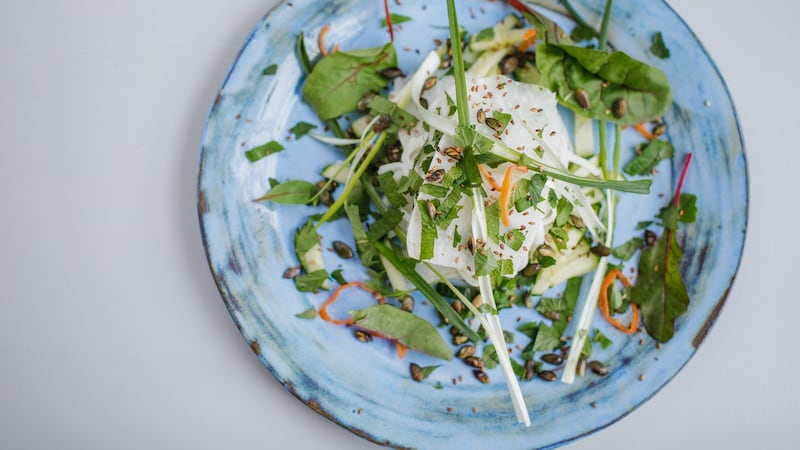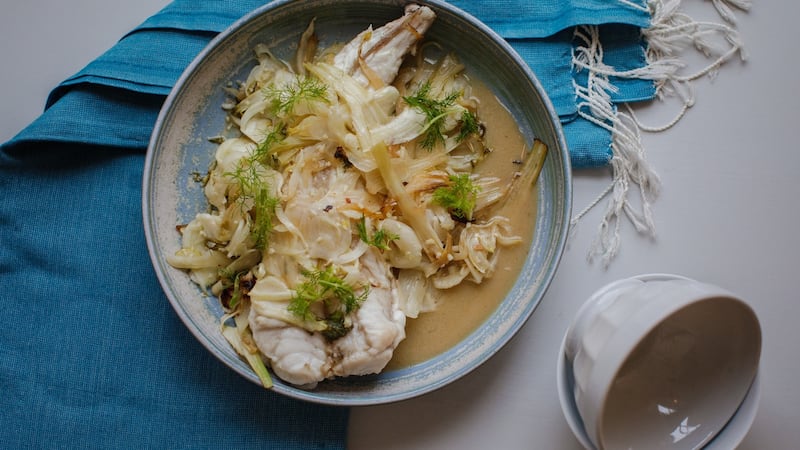In the past, eating fish was equated with fasting in Catholic countries. I was always surprised as a child hearing elderly relatives talk about having a day over Christmas where they would fast. “But it’s Christmas?” I questioned. “We have all this food and you’re not going to eat for a whole day.”
I was always intrigued by this until I learned that fasting consisted of three meals but with fish in the place of meat for the main meal.
It was a church tradition where Christmas Eve was a fasting day when one had a plate of potatoes and white sauce, with fish later being added to this, hence the tradition of fish in white sauce.
Some households would have St Stephens Day as their fast day as a way of giving thanks for the bounty of the day before. This probably explains why fish was, and is still, not that popular in Ireland: along with people over-cooking it, it also equates to penance.
The new year is ahead of us and it provides us with yet another opportunity to focus on our eating habits. So here, I give you dishes to try next week that are the lightest, freshest and simplest to ring in the New Year and leave the stodge in 2017.
Monkfish is a great fish to cook, as you don’t have to fiddle with any small bones and I find it a great way to introduce non-fish eaters to a more accessible fish – its meaty consistency goes down well with younger children, too. Monkfish works well for a large gathering, especially when cooked whole and on the bone. The bone acts as a good conductor of heat. You will need to order it in advance from your fishmongers as they do their filleting early in the morning and I find by mid-morning most fish is off the bone. Ask to have the outer skin removed as this takes a bit of effort and know how. You will then have to do a little work in removing the remaining skin, which is explained below. Then, all that’s left to do is to make sure you do not overcook it – otherwise the result will be penance!
Spring onion, daikon and cucumber salad with toasted pumpkin and sunflower seeds

These ingredients are just a guide so feel free to change things around. You can use any radish you can find but it is important to include it as it has heat and adds a contrast to the freshness of the cucumber. It’s the dressing here that I really love and find I like to make extra to have at a later date. There are so many different kind of noodles available to us now, so just pick your favourite and follow the instructions on the packet. I am inclined to use rice noodles as they are wheat- and egg-free so I am covered for all guests. Buy limes that are going yellow as they will contain more juice.
Ingredients
(serves 4)
140g rice noodles
Salt
1 small daikon radish
½ large cucumber
Generous handful each of coriander and mint leaves, torn
1-2 red chillies, sliced very thinly
For the dressing
1 small piece ginger – ¼ thumb size, adding extra if needed to give an edge
3 tbsp sesame paste
Zest and juice of 2 to 3 limes
3 tbsp sesame oil
Salt and pepper to taste
To garnish
2 tbsp sesame seeds
2 tbsp pumpkin seeds
Soak the noodles in cold water for about 30 minutes or until softened. Then drain and return to the bowl and cover with boiling water and and give them a good stir until they become soft and tender. Drain and rinse in cold water.
Peel and slice the daikon thinly, you want about six to eight slices per person. Chop the spring onions into thin strips and thinly slice the cucumber or chop into matchsticks.
Make the dressing by blending all the ingredients well together.
Toss the noodles in half the dressing and half of the herbs, coating them well as you go.
Pile the dressed noodles in the middle of a large serving plate, sprinkle the vegetables on top and around. Pour the rest of the dressing over the vegetables along with the rest of the herbs.
Now take a dry pan and toast the seeds until they start to brown and you smell them. While still hot, tip the contents of the pan over the salad and serve.
Roasted monkfish with fennel

Ingredients (Serves four)
2 big cloves of garlic
1 tsp fennel seeds
900g monkfish tail on the bone, skinless weight
3 large fennel bulbs
Olive oil
Salt
1 lemon
Pernod/Pastis
Fresh fennel or dill if available
About 30 minutes before you plan to eat, heat your oven to the hottest temperature and heat a flame-proof roasting tray or oven-proof frying pan that will take the fish snugly. If your pan is too big the fennel will burn.
In the meantime, chop the garlic with the fennel seeds and put into a mixing bowl along with just enough oil to make it into a paste, adding some salt. Let this stand while you prepare the fish.
Take a fish knife (as the blade is thin and flexible)and patiently remove all the thin membrane that is left on the fish, trying not to remove any meat – this membrane can be bitter and does not look pretty (grey) when the fish is cooked. This will take a few minutes to do but it will be worth it!
Next take your knife and make some slits all over the fish and push a little of the garlic and fennel paste into each one, using it all up as you go, rubbing any remaining oil over the fish
Next slice the fennel bulbs thinly, lengthways.
Remove your hot tray or pan from the oven, drizzle a little oil on it, making sure you coat the centre of the pan, follow by piling on the sliced fennel and adding a little salt as you go. Then place the fish on top and return to the oven.
Zest and juice the lemon and chop the zest finely.
Roast until done – about 15 minutes is a guide as it depends on thickness. You can check this by inserting a knife in the thickest part, the middle of the tail by the bone, and checking if the meat is cooked through. If it’s just a little underdone, do not return it to the oven as it will continue to cook in its heat and the sauce. Remove the fish to a warm serving plate and cover to keep warm.
Place the pan on the hob and put on a medium flame, bring to the boil, scraping the pan as you go. Add the zest and juice of the lemon and a good splash of Pernod to make a sauce by bringing it to the boil .
After a minute (the alcohol will have cooked out and the flavours blended) pour the contents of the pan over the monkfish, letting the fennel stay where it lands and sprinkle with the chopped herbs.
Grapefruit and oranges with honey and mint
This is the simplest and purest of desserts for this time of year. It’s also the best time to eat citrus fruits, as they are at their prime. Good honey is now so scare it should be getting centre stage and appreciation. If you can’t find fresh mint, pomegranate seeds would go so well in taste and looks.
Ingredients
(serves 4)
2 large grapefruits
2 large oranges
4 tsp honey
A few sprigs of mint
Top and tail the fruits and peel with a serrated knife, removing skin and pith. Have a small bowl to catch as much of the juice as you possibly can. Make sure to remove any stray white pith. Cut the fruit into thin slices and lay them overlapping on a serving plate, squeezing any juice from the skins as you go.
Stir the honey into the reserved juice and pour over the sliced fruit. Scatter with mint and another drizzle of honey to finish.
Serve with lightly whipped cream, yoghurt or just as it is with a bowl of mixed nuts and or some good chocolate.











